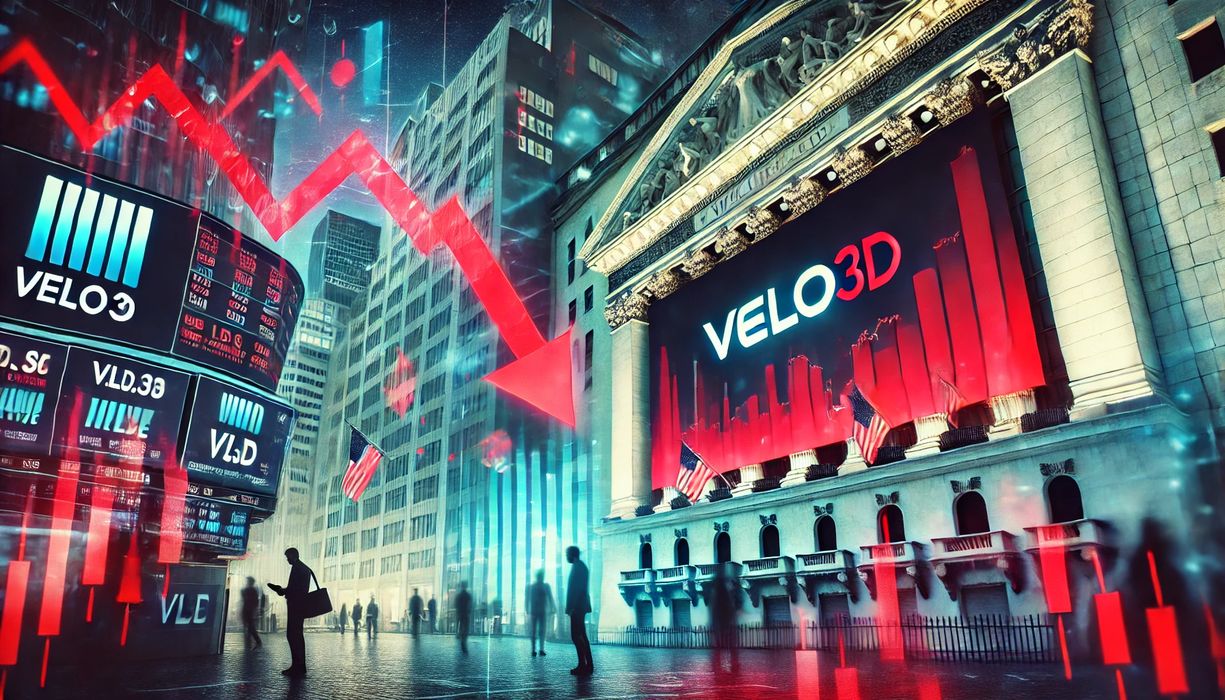
Velo3D has exited the NYSE, adding to their woes.
The California company has struggled mightily to maintain their valuation since they began public trading way back in October 2021, with a massive valuation of US$1.65B on their first appearance in our weekly leaderboard.
Over the course of months, the company peaked on the leaderboard with a valuation of US$2.24B. As of this writing, the company’s valuation is a mere US$5M – an incredible drop of 99.8% of their peak valuation. Basically, everyone who invested in Velo3D during their public trading period who did not sell, lost virtually all their money.
What’s happened? A great deal, but this week was the biggest move: the company has been delisted from the prestigious NYSE. The NYSE has a rule whereby companies must maintain a stock price above US$1. With Velo3D’s plummeting valuation, their stock price similarly degraded, eventually going below the threshold.
Companies in this situation have two course of action: they can beef up their business to gain investor confidence and raise their market price, or do what’s called a “reverse stock split”. This split combines shares together to increase the value of single shares. It’s clearly a stopgap maneuver, but some companies in this situation have to do it to remain on the exchange. Markforged just did exactly this, as they are in a similar, but not quite as bad situation as Velo3D.
Velo3D apparently decided NOT to do a reverse stock split. Instead, they decided to give up on the NYSE and instead trade on the lesser OTCQX Best Market – a market I’ve never heard of, and probably you haven’t either.
The OTC markets differ from normal exchanges because they aren’t really exchanges where anyone can buy and sell easily. Instead the shares are traded directly between parties, typically by brokers. This causes notably less investment traffic than you’d see on a major exchange, resulting in lesser valuations due to lower demand.
Instead of trading with big Fortune 500 companies, Velo3D now shares a platform with high risk ventures and some questionable companies. However, the OTCQX is the highest grade of OTC exchange, where some level of financial requirements exist.
Last week the company’s valuation was around US$11M, but as of this writing it’s less than half of that, with the decrease happening coincident with the company’s announcement.
I’m quite disappointed in Velo3D. This is a company with truly terrific technology used by a number of major companies, including SpaceX to produce rocket engines. Somehow, in spite of great tech, the company’s valuation has been driven down to near zero over the course of the last three years.
What’s entirely surprising to me is that no other larger player in the 3D print space has not yet acquired them. After all, it would take only US$5M to do so. My goodness, there are very likely individual readers of this story that can personally afford to buy them, if they wanted to.
What happens next? I am not sure. Velo3D’s valuation has been in the “affordable” range for months now, yet no other company has acquired them. While it might not be surprising to report on an acquisition even next week, I can also see no acquisition happening because it should have already happened, particularly with multiple large players on the hunt for new capabilities.
Finally, there is the possibility that one of Velo3D’s major customers just might buy them in order to keep the tech alive. If a company has designed their products around Velo3D technology, it might be easier to purchase the company for US$5M than to go through the process of re-qualifying their products with other technology.
Paging SpaceX!
Via Velo3D
